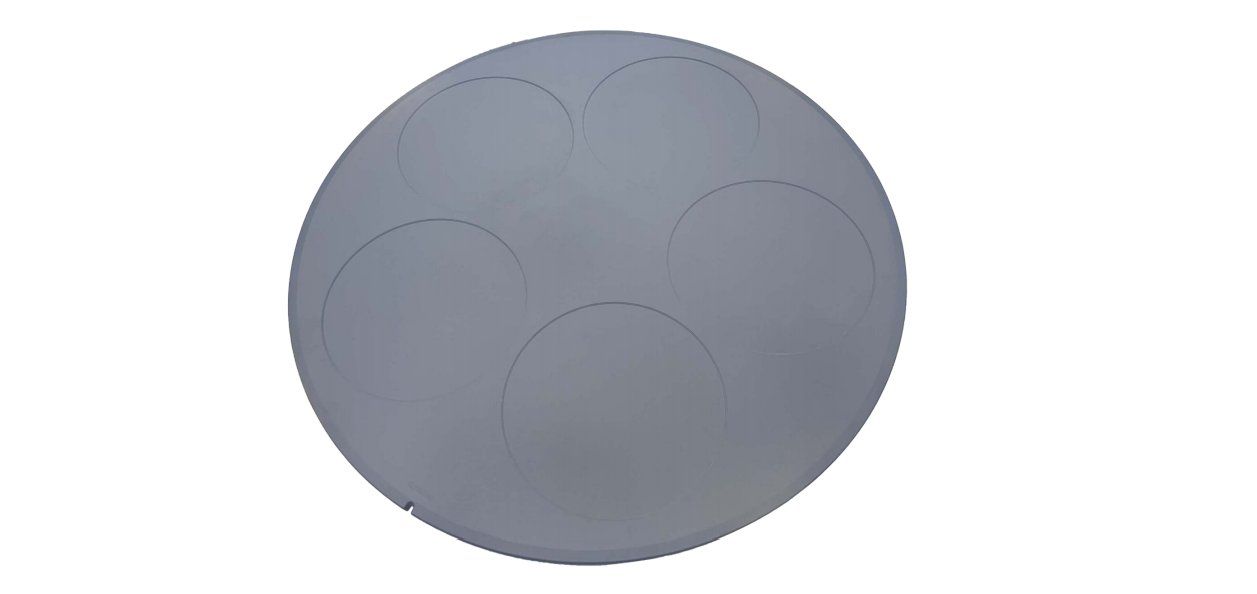
Standard inks and coatings sic Coatings refer to materials classified under the Standard Industrial Classification (SIC) system. This system organizes industries by their primary activities, ensuring consistency in categorization. These coatings play a vital role in manufacturing by protecting surfaces like metal from rust, wood from decay, and adding functional properties such as fire resistance. Industries such as aerospace, automotive, and consumer electronics rely on these coatings sic for durability and performance. Additionally, sic coating on graphite enhances its resistance to wear, making it suitable for harsh environments.
Key Takeaways
- Standard inks and coatings shield surfaces, making them last longer. They are used in industries like cars and airplanes.
- Water-based inks are better for the environment. They release fewer harmful chemicals and still give great print quality.
- UV-curable inks have strong colors and dry fast. They are perfect for high-quality printing jobs.
Understanding Standard Inks and sic Coatings
What Are Standard Inks and Coatings?
Standard inks and coatings are essential materials used to enhance the functionality and appearance of surfaces. Inks are liquid substances containing pigments or dyes, which are applied to create text or images on substrates like paper, fabric, or plastic. Coatings, on the other hand, are protective layers that improve surface properties such as durability, adhesion, and resistance to environmental factors. Together, these materials play a critical role in industries ranging from printing to automotive manufacturing.
Both inks and coatings involve the application of a thin film to a substrate. For example, sic Coatings are often used to protect surfaces from wear and corrosion, ensuring long-lasting performance in challenging environments.
The Role of the SIC System in Classification
The Standard Industrial Classification (SIC) system organizes industries based on their primary activities. This system helps manufacturers and suppliers categorize inks and coatings according to their composition and drying mechanisms. The table below illustrates how the SIC system classifies different types of inks:
| Ink Type | Diluting Media | Drying Mechanism |
|---|---|---|
| Solvent-based inks | Solvents | Evaporation of solvents (60-70%) |
| Water-based inks | Water | Evaporation of water/amine/ammonia |
| Oil-based inks | Oil | Evaporation and oxidation |
| UV curable inks | Acrylic monomers | Polymerization (100% solid, no solvents evaporate) |
This classification ensures consistency and simplifies the selection process for industrial applications.
Key Features of Standard Inks and Coatings
Standard inks and coatings exhibit unique characteristics that make them suitable for diverse uses. These include:
- Solvent-based inks contain flammable solvents and dry through evaporation, making them ideal for high-speed printing.
- Water-based inks are water-resistant due to their non-water-soluble dry content, offering an eco-friendly option.
- Oil-based inks, commonly used in offset printing, dry through a combination of evaporation and oxidation.
- UV curable inks cure via polymerization, resulting in a solid finish without solvent evaporation.
These features highlight the versatility and efficiency of standard inks and sic Coatings in industrial and commercial settings.
Applications of Standard Inks and sic Coatings
Printing and Packaging Industries
Standard inks and coatings play a vital role in the printing and packaging industries. Flexible packaging inks, for instance, are divided into surface print inks and lamination inks. Surface print inks provide durability against environmental factors, while lamination inks create protective multi-layered structures. These inks are essential for packaging materials like pouches and wrappers.
Industries such as food and beverage dominate the market due to the growing demand for packaged goods. Pharmaceutical and healthcare sectors rely on these inks to ensure product safety and efficacy. Personal care and cosmetics industries use them to enhance product appeal. Additionally, marketing and advertising materials, including flyers and brochures, benefit from standard inks to improve brand visibility. Coatings also protect surfaces from damage, making them indispensable for outdoor applications.
Industrial and Automotive Uses
In industrial and automotive settings, standard inks and coatings provide critical protection. Coatings safeguard metal surfaces from rust and erosion, ensuring durability in harsh environments. For example, automotive parts and outdoor furniture benefit from these protective layers. Coatings also enhance resistance to fire and chemicals, making them suitable for demanding applications.
These materials not only protect but also improve the functionality of products. Paints, for instance, shield wood from rot and decay, while specialized coatings offer additional properties like corrosion resistance. Their versatility makes them a cornerstone of industrial and automotive manufacturing.
Consumer Goods and Electronics
Consumer goods and electronics heavily depend on standard inks and coatings for both protection and aesthetics. Coatings shield electronic devices from wear and environmental exposure, ensuring longevity. In addition, they enhance the appearance of products, making them more appealing to consumers.
For instance, coatings on appliances prevent damage during shipping and handling. In the electronics industry, these materials provide functional enhancements, such as heat resistance, which is crucial for devices operating under high temperatures. Their ability to combine protection with visual appeal makes them indispensable in this sector.
Benefits of Standard Inks and sic Coatings
Durability and Performance
Standard inks and coatings deliver exceptional durability and performance across various applications. Their robust formulations protect surfaces from wear, corrosion, and environmental damage. For instance, automotive coatings shield metal parts from rust, ensuring long-term reliability. Similarly, inks used in packaging maintain their vibrancy and adhesion, even under challenging conditions like moisture or heat. These qualities make them indispensable in industries where longevity and resilience are critical.
The performance of these materials also extends to specialized applications. UV-curable inks, for example, create a solid, scratch-resistant finish that withstands heavy use. Water-based coatings offer excellent adhesion and flexibility, making them suitable for substrates like paper and plastic. This combination of durability and functionality ensures that standard inks and coatings meet the demands of modern manufacturing.
Cost-Effectiveness and Market Accessibility
Standard inks and coatings provide a cost-effective solution for businesses. Their widespread availability and compatibility with existing equipment reduce production costs. Manufacturers can achieve high-quality results without investing in expensive specialty materials. For example, water-based inks offer an affordable option for eco-conscious companies, while solvent-based inks support high-speed printing at a lower cost.
Market accessibility further enhances their appeal. These materials are readily available in various formulations, catering to diverse industrial needs. Their adaptability allows businesses to optimize production processes without compromising quality. This affordability and versatility make standard inks and coatings a practical choice for companies of all sizes.
Environmental and Sustainability Considerations
Standard inks and coatings contribute to environmental sustainability through innovative formulations. Many products now incorporate renewable materials, reducing their carbon footprint. Natural-based inks, for instance, contain up to 90 percent renewable content, lowering CO2 emissions by 25 to 30 percent compared to traditional options. Additionally, low VOC (volatile organic compound) inks improve air quality and create safer working environments for employees.
Recyclability also plays a significant role in sustainability efforts. Washable inks, such as INX Genesis™ GS, simplify the recycling of plastic films, promoting circular economy practices. GelFlex™ EB flexographic inks support lightweight packaging, reducing material usage and emissions. These advancements align with the goals of major consumer goods companies, 80 percent of which aim to achieve fully recyclable packaging by 2030. With two-thirds of consumers prioritizing recyclable packaging, standard inks and coatings meet both industry and consumer demands for eco-friendly solutions.
Types of Standard Inks and sic Coatings
Water-Based Options
Water-based inks and coatings offer several advantages, making them a popular choice in industries prioritizing sustainability. These formulations rely on water as the primary solvent, reducing environmental impact. They emit little to no volatile organic compounds (VOCs), ensuring safer working conditions and easier regulatory compliance.
| Advantage | Description |
|---|---|
| Lower CO2 footprint | Reduces carbon emissions, supporting eco-friendly practices. |
| Excellent print quality | Matches the performance of solvent-based inks due to advanced formulations. |
| Low (or no) VOC | Enhances worker safety and simplifies compliance with environmental laws. |
| Cost analysis | Reduces costs related to pollution permits and waste management. |
| Longer in-can stability | Maintains viscosity during long runs, eliminating the need for solvent use. |
These features make water-based options ideal for applications like packaging, where both quality and sustainability are critical.
Solvent-Based Options
Solvent-based inks and coatings excel in durability and versatility. Their ability to adhere to non-absorbent surfaces like plastics, metals, and films makes them indispensable in various industries.
- Commonly used in packaging, signage, and labels.
- Effective for outdoor advertising due to weather resistance.
- Utilized in automotive applications for vehicle parts and components.
- Favored in electronics for circuit boards and precision printing.
These inks perform well in harsh environments, ensuring long-lasting results for demanding applications.
UV-Curable Options
UV-curable inks and coatings stand out for their unique curing process. Unlike solvent or water-based options, they solidify through polymerization when exposed to UV light.
| Feature | UV-Curable Inks | Other Inks (Solvent/Water-Based) |
|---|---|---|
| Curing Process | Polymerization via UV light | Evaporation of solvents/water |
| Solid Content | 100% solids | Up to 80% evaporation |
| VOC Emissions | Significantly reduced | Higher due to solvent use |
| Energy Requirement | Lower with LED systems | Higher with thermal drying |
These inks offer superior color strength and appearance, making them ideal for high-quality printing and specialized applications.
Comparing Standard Inks and sic Coatings to Alternatives
Advantages Over Specialty Inks and Coatings
Standard inks and coatings offer several advantages compared to specialty options. Their affordability and widespread availability make them accessible to businesses of all sizes. These materials are compatible with a wide range of substrates, including paper, plastic, and metal, which simplifies production processes. Their versatility allows manufacturers to use them across multiple industries, from packaging to automotive applications.
Another key advantage lies in their ease of use. Standard inks and coatings often require minimal adjustments to existing equipment, reducing downtime and operational costs. For instance, water-based inks provide excellent print quality while maintaining environmental compliance. Similarly, solvent-based coatings deliver superior durability, making them ideal for outdoor applications. These benefits position standard inks and coatings as practical solutions for high-volume production needs.
Limitations and When to Use Alternatives
Despite their benefits, standard inks and coatings have limitations. They can hinder the recyclability of packaging materials, especially in multi-layered structures. This issue arises because some formulations are difficult to remove during recycling, which affects the quality of recovered materials.
Alternatives like washable inks and gel-based technologies address these challenges. Washable inks simplify recycling by allowing easy removal from substrates, enhancing the recovery of high-quality materials. Gel-based inks reduce color bleed and improve adhesion, making them suitable for complex packaging designs. These alternatives should be considered when sustainability goals or specific performance requirements cannot be met by standard options.
Emerging Trends and Innovations
The field of inks and coatings is evolving rapidly, driven by technological advancements and consumer demands.
| Trend/Innovation | Description |
|---|---|
| Technological Advancements in Coating Formulations | New formulations improve ink adhesion, drying times, and durability, ensuring high-quality results for modern printing needs. |
| Emergence of Sustainable and Bio-based Coatings | Coatings derived from renewable resources are gaining popularity as industries prioritize eco-friendly solutions. |
| Rapid Growth of Digital Printing Technologies | Specialized coatings for digital printing enhance ink adhesion and print quality, meeting the demands of this growing market. |
Additionally, innovative products like thermochromic inks, which change color with temperature, and photochromic inks, which react to sunlight, are capturing consumer interest. Glow-in-the-dark inks also offer unique applications, creating memorable experiences and enhancing brand visibility. These trends highlight the dynamic nature of the industry and its focus on sustainability and innovation.
Standard inks and coatings remain essential across industries due to their protective and functional roles. They prevent corrosion, enhance branding, and meet regulatory standards. Businesses should prioritize durability, cost-effectiveness, and sustainability when selecting these materials. Waterborne systems and low-VOC technologies offer eco-friendly solutions, aligning with modern environmental and performance demands.






